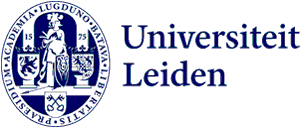
‘Moon landers’ measure greenhouse gases in unique agricultural living lab
A huge shiny aluminium object stands in the middle of the Polderlab in Oud Ade. Are the researchers trying to make contact with extraterrestrial life? Certainly not; they are using the 'Moon landers' to measure whether innovative forms of agriculture reduce greenhouse gas emissions. Fleur van Duin works as a PhD student in the Polderlab and is excited about the arrival of the instruments.
In the Polderlab Vrouwe Venne in Oud Ade, several devices that measure greenhouse gas emissions have been installed recently. ‘Farming on peat soil leads to the peat breaking down because of the lowering of the water level. This releases large amounts of carbon dioxide and methane,’ says Fleur van Duin, PhD student at the Institute for Environmental Sciences (CML) and Naturalis Biodiversity Center. ‘We are investigating alternative forms of agriculture on peat soil and of course, want to know whether that leads to fewer emissions.’ The new instruments continuously monitor greenhouse gas emissions. This gives Van Duin and her colleagues a clear picture of emissions from different forms of agriculture.
It is interesting to work with such an instrument, which collects a large amount of data, Van Duin says. ‘Normally, as a biologist, you are mainly counting plants and animals, and once in a while you measure water quality with a device.’
Playground for ecologists
Van Duin's research focuses on sustainable agriculture in peatland. She pays attention to biodiversity, emissions and water quality. She conducts this research in the Polderlab. Van Duin: ‘We sometimes call it our playground. It is really special that you have more than 30 hectares at your disposal to set up cropping systems on a large scale and immediately see if it works for the farmer. So, the data you get give a very realistic impression.’
Unique in the Netherlands
The equipment was developed in Denmark. The Danish also have a lot of peat and do this type of measurement in nature reserves. What is unique is that in the Netherlands, we use it for studying crops ‘in real life’, says Van Duin. ‘And it’s nice that with this new equipment, we get valuable data that we can work with immediately.’
The instruments are located in different parts of the Polderlab: between rice and cranberries, on grass, on higher parts and even in the ditch. Van Duin: ‘We are experimenting with aquatic plants, and now we can measure whether this changes the emissions from the ditch. That was quite a challenge, also for the developers. But the instruments are in the ditch and are already collecting lots of data!’

Ideas for the future
Van Duin and her colleagues are already looking at real-time data. ‘If we have an initial picture of emissions, we can do follow-up research: what happens if you raise or lower the water level a little bit? Does our management influence greenhouse gas emissions? That's ultimately what it's all about.’
As long as Van Duin is working on her research in the Polderlab, the instruments will remain in place. Next, fellow researchers at the CML have some ideas for the measuring devices. ‘You can let them float in the Leiden canals to see if water quality and emissions are related.’ Other options are also possible according to Van Duin and her colleagues. ‘Good ideas from the faculty for using our 'Moon landers' are always welcome!’
About Polderlab Vrouwe Venne
At the Polderlab Vrouwe Venne, farmers, citizens and researchers work together to shape the future of Dutch agriculture. The goal: to restore biodiversity and the peat meadow landscape. And to explore how farmers can earn their living sustainably.
Polderlab Vrouwe Venne is a cooperation of citizens’ initiative Land van Ons and Leiden University, with support from the Holland Rijnland municipalities. The polder is located in Oud Ade, near Leiden.
Take a look at the website of Polderlab Vrouwe Venne
